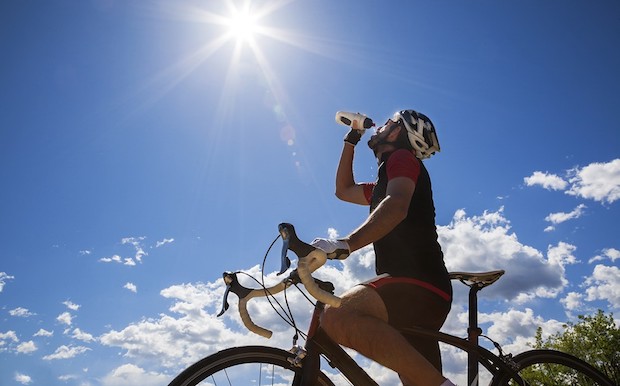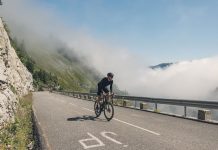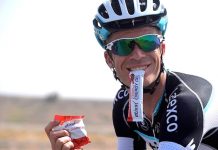In a study published in the March 2015 issue of Medicine & Science in Sports and Exercise, researchers reported that a group of trained cyclists who performed a 43K time trial in both cool (46 degrees F) and hot (98 degrees F) conditions finished a whopping 11 minutes slower when they raced in the heat. After two weeks of heat training, those same riders nailed their PR on the same TT despite the oppressively hot conditions.
The science is straightforward. Our body adapts to exercising in the heat by expanding our blood volume so we have more to sweat out before performance declines, and by triggering our sweat response sooner in the session and allowing us to sweat more, so we can keep our core body temperature cooler even when we’re working hard. In fact, research shows these same adaptations can help you perform better no matter the temperature.
As Wissell found, you can “fake” heat training even if you’re stuck getting ready for the season somewhere cold. “You just need to increase your core body temperature,” explains environmental physiology researcher and former Olympian Santiago Lorenzo, Ph.D., assistant professor at Lake Erie College of Osteopathic Medicine in Bradenton, Florida. “That’s the number-one stimulus for your body to evoke all those adaptations.”
There’s no need to set up your trainer in a sauna. You just need to get hot enough to work up a good sweat. You can accomplish it by wearing more layers than you need on a cold day, but then you run the risk of getting chilled because you’re soaking with perspiration. So it’s best to do these sessions indoors, where you can control the environment. Lorenzo notes that laboratory studies can control environmental conditions and monitor the cyclist’s adaptations very closely. Therefore, there is no guarantee every DIY heat-training scenario will work in exactly the same way, but as long as you elevate your core body temperature, you should see some adaptations.
Set yourself up in a warm to hot room. Have fluids on hand. Then pedal away at a light to moderate effort (about 60 to 70 percent of max heart rate is sufficient) so you break a sweat. Maintain that effort for 60 to 90 minutes.
“You should start feeling gradual adaptations in as little as two or three sessions,” says Dr. Lorenzo. “Our research and other investigations have shown essentially full acclimation can occur after 10 sessions,” he says.
In all of this there is one important caveat: Don’t be dumb. You want to sweat and feel warm, but you don’t want to cook yourself. “You have to be careful because increasing your core body temperature too much can be really dangerous,” he says. Stay hydrated and listen to your body. You don’t want to get so hot that you become dizzy, get the chills, or stop sweating. You can get all the adaptations you need without extreme measures.














